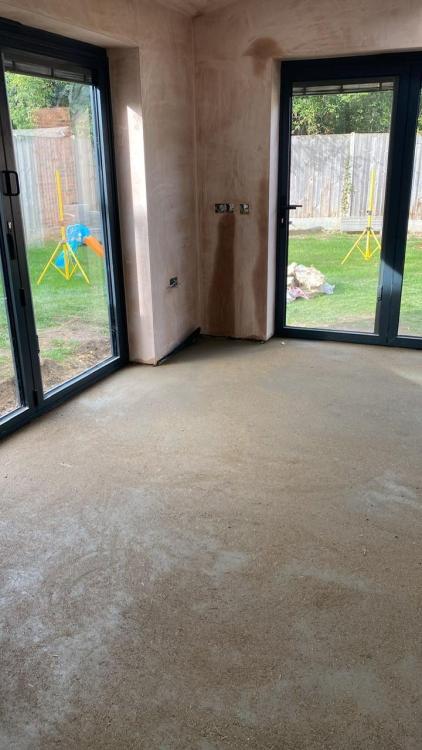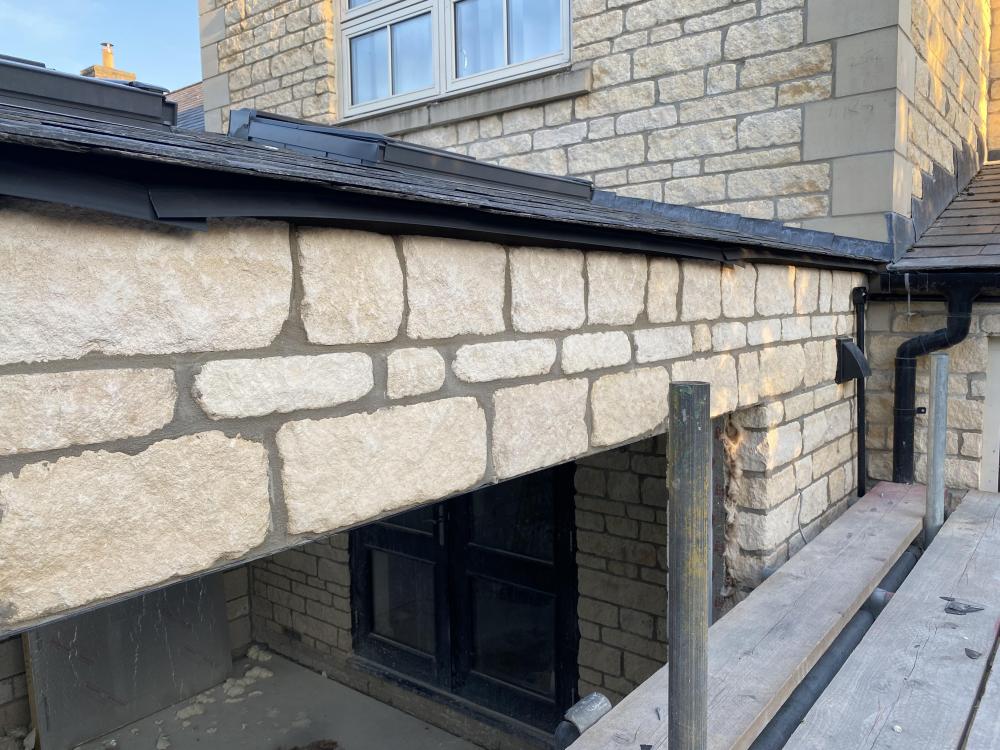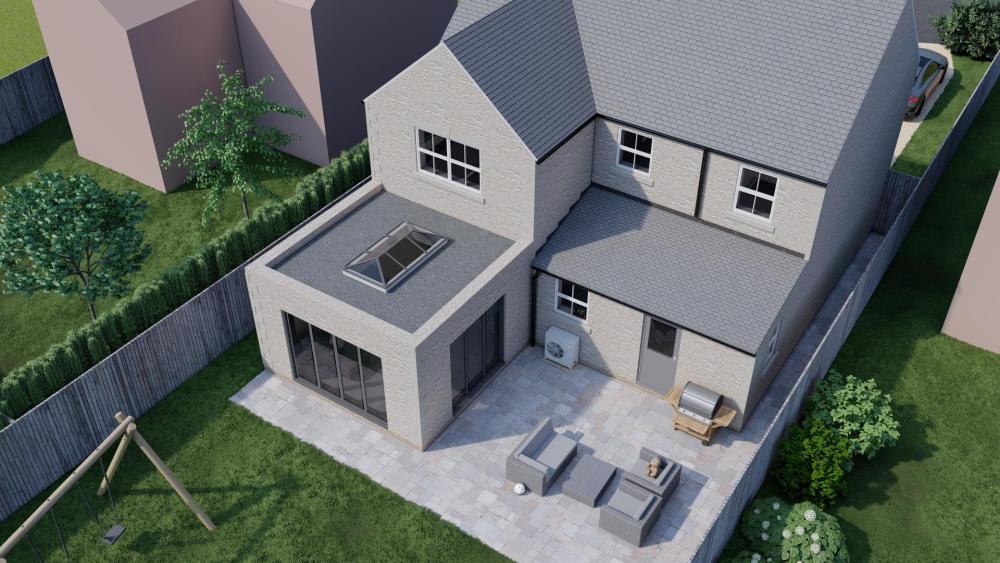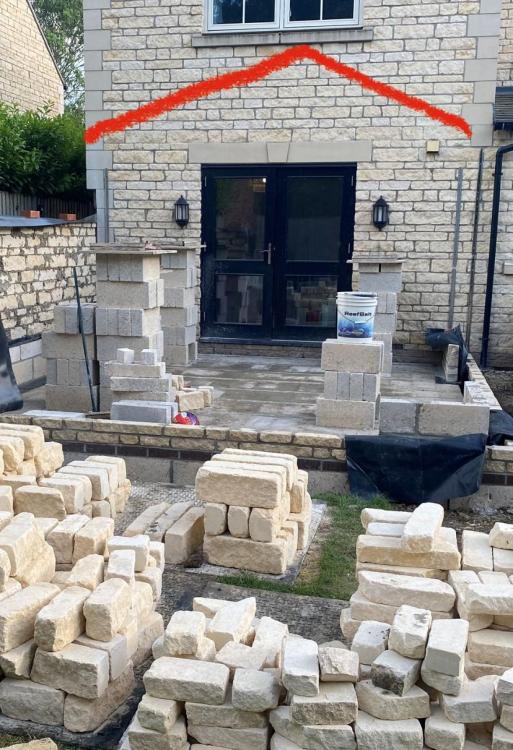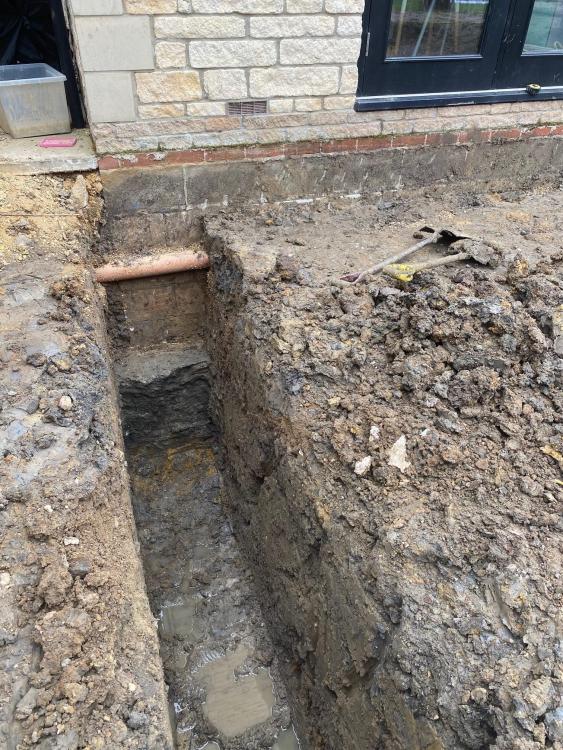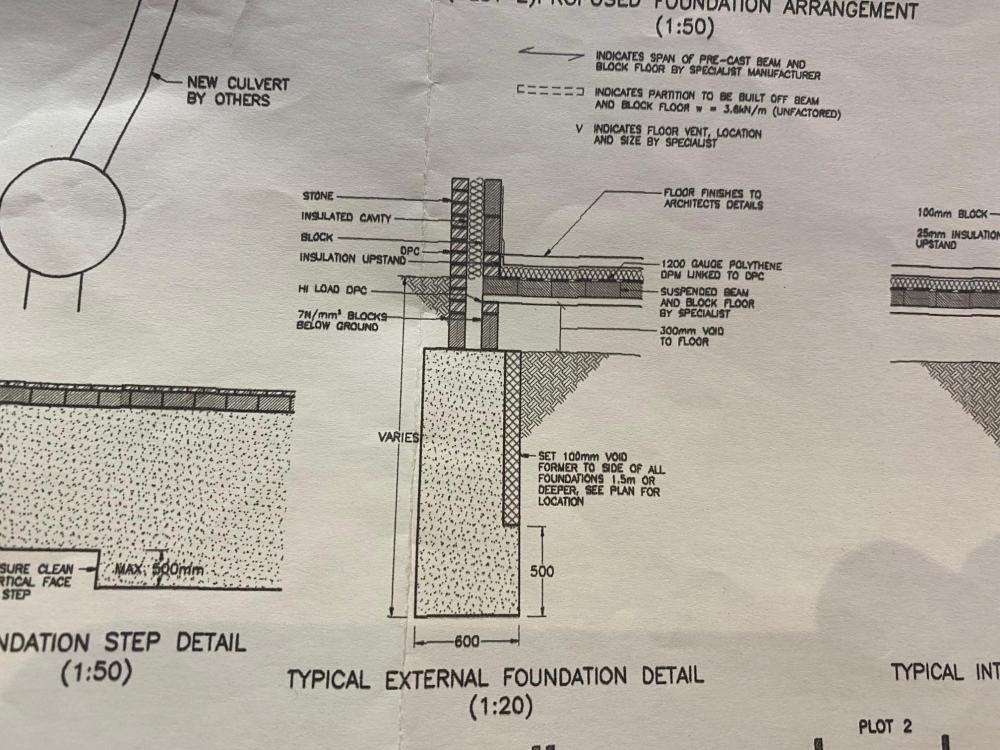
warmington_ash
Members-
Posts
18 -
Joined
-
Last visited
Personal Information
-
Location
Northamptonshire
warmington_ash's Achievements

Member (3/5)
0
Reputation
-
Hi, I have a query that I was hoping someone could lend some advice on. We had our bifold doors installed a few weeks ago. They left an oversized DPM flapping on the internal side of the doors, and the fitter specifically said we needed to 'turn up the DPM under their product prior to the floor installation'. I have returned home to find out that our floor insulation and screed has been laid and the above has NOT been done. The oversized DPM was instead lapped with the DPM that was placed under the screed. This essentially means that the screed has been laid in direct contact against the bottom of the aluminium door frame. Is this okay? Or does this present a real risk of corrosion of the frame in the future? Pic attached for reference. Any comments would be appreciated.
-
It is with adding that the membrane used by the roofer is Master 112 (breathable membrane). After reading some more online, I am hopeful that because this is breathable it may negate the need for any additional ventilation. There will be a AVCL fixed to the underside of the roof insulation.
-
Thanks for the reply. I can drill the holes from the inside to ensure that I do not hit rafters. Therefore might the drilled holes idea work? Pic attached.
-
-
-
Hi, We’re well into our extension project and I fear we’ve encountered a problem. Hoping for some advice on a suitable remedy. The roofer has progressed the roof but has NOT installed a proprietary eaves ventilator. He is a friend of mine so I am hoping there may be an easier solution opposed to having an awkward conversation with him about stripping off the roof tiles to put one in. Would this work… at the top of the external wall we have two strips of timber (see pics). Would drilling a series of holes into these timber pieces allow air get into the underside of the roof for ventilation? Any help would be appreciated.
-
Cladding a ridge beam - Help required!
warmington_ash replied to warmington_ash's topic in House Extensions & Conservatories
Yes I was going to insulate under the rafters with 50mm insulated plasterboard. Should I put a VCL around the ridge beam? -
Hi, We’re considering fitting a fake oak beam cladding around the ridge beam in our extension. I just wanted to ask for some advice on the best way to go about doing this. Ideally we want to keep the beam as slim as possible, but obviously I’m conscious that we can’t create a cold bridge. I was thinking of: 1. Cloaking the beam in 25mm insulation to both sides and the bottom - is this enough? 2. Stapling a vapour control layer to the outside of the insulation - is this necessary? 3. Installing the fake oak beam by bolting it fully through the ridge beam. 4. Then finally insulating and plastering the remainder of the roof - by doing this last I should be able to achieve a nice finish against the oak. Is the above the best way to approach this? Any advice would be greatly appreciated.
-
Hi, For our extension Hi, For our extension we are proposed 2no bifold doors. I have scanned the internet for suitable bifold manufacturers and suppliers, but I was interested to hear what people’s opinions are on here regarding who’s the best in the market? We want a good quality product with a reliable aftercare service. I have found a number of local suppliers that use systems such as Korniche or Cortiza, which all seem a bit cheaper. Beyond that, I’ve come across here’s brands such as Kloeber and Express Bifolds that supply and fit their own products (which are more expensive, but I went to view the Kloeber product recently and it really did look superior). What’s people’s experiences of bifolds and who would you recommend? We are based near Peterborough.
-
Lead flashing directly under cill acceptable?
warmington_ash replied to warmington_ash's topic in Roofing, Tiling & Slating
Thanks all for your comments. I'm starting to think that a last minute switch to a flat roof is probably a good call? Obviously this would completely eradicate the issue with the ridge height, and retro fitting a cavity tray would be much simpler to do along a horizontal line (note that the stonework is in varying heights and widths, which will make retro fitting a cavity tray diagonally a very complex and expensive task). A friend of mine who is a good with 3D stuff did actually draw this option for us when we first started planning this project. Obviously it's a change to the approved planning drawings, so I'd need to agree it with planners, but as it's to the rear of my property I'm not too worried about that. Brickies are due for their final visit Friday, so this is all very late in the day! But better late than never I guess.... I'd certainly rather be having this discussion now instead of when my rafters are in place! Any further thoughts would be really appreciated. -
Hi, Our extension is progressing well and I'm looking for an answer I have to a query re the new roof. We're proposing a pitched roof (as crudely drawn below, red). In order to achieve a suitable fall, I was planning to tie the lead flashing to the ridge tile directly under the stone cill. Is this likely to be acceptable? With this, the pitch will be around 16 degrees, which is based on the pitch meeting the adjacent mono-pitch and gutter (which you can just see to the right of the photo). Any help or advice would be appreciated.
-
The existing house founds are a combination of 2.4m and 2.9m deep. It was an old orchard so heave was an issue which dictated the depths. The ground is good solid clay, so it it wasnt for the trees, my understanding is that the foundations (new and old) could be much shallower. My engineer has advised a new depth of 1.5m with dowel rebar joints. The depth of 1.5m is based on the NHBC guidance regarding trees (wild cherry tress at the back of the garden). Maybe the unexpected blocks I've found that sit on the existing foundations are effectively acting as the foundation? But I'm not sure why they would rather have done that compared to just concreting higher? and why wouldn't the drawing have been followed? All a bit odd. I'm just praying that we don't need to go deeper, because that will be a real problem.
-
Hi, We've just started our small single storey extension, and we've dug out the new footings, and to my surprise, the existing foundations are not as drawn. The house in only 7 years old and the existing details show the top of foundation 600mm below FFL, however its actually 1400mm below. There extras courses of below ground blockwork that are not shown on the plans. We have dug out our new footing to the depth proposed by our engineer (to allow for 1500mm of concrete), however as it stands, the new footing will interface with only 775mm of the existing concrete footing and 725mm of existing blocks. I've contacted my engineer, but the digger driver is here again tomorrow so I was keen to hear what the likely outcome will be if anyone has any views? Will he likely tell me that I need to dig deeper to ensure a greater concrete to concrete interface? If so, I'm a bit snookered. Access is tight and this is the deepest that a mini digger can go. Any help or advice would be greatly appreciated.
-
Extension over weep holes - What to do?
warmington_ash replied to warmington_ash's topic in House Extensions & Conservatories
No that's the only one. -
Extension over weep holes - What to do?
warmington_ash replied to warmington_ash's topic in House Extensions & Conservatories
ps excuse the roaming 1 year old in the window reflection 😄

